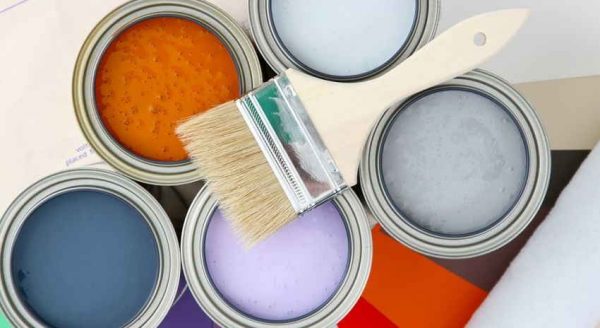In an attempt to curb the inexhaustible energy of the sun by mankind, solar cells were invented, converting it into electricity or heat. Despite the fact that such an innovation has received widespread recognition, it cannot be called affordable because of its high cost. However, research does not stand still, and the search for and the creation of improved alternatives to expensive panel installations is already underway.
One of the laboratory developments of scientists was the latest compound, called "solar paint" (Solar Paint). It is assumed that in just a few years, such a technology will begin to be used everywhere and will become one of the most relevant sources of clean energy.
to contents ↑What is sun paint
This is a new generation of material based on special semiconductor nanoparticles. Outwardly, it looks like a pasty yellow substance. The composition obtained as a result of research can be applied to any current-conducting surface without the use of special equipment. The interaction of a panel painted with such a paint, an electrode and sunlight leads to the generation of electricity that can satisfy the energy needs of all mankind.
to contents ↑Development
The revolutionary discovery was presented by a group of American researchers from the University of Notre Dame. The project manager was Prashant Kamat, who is a doctor of chemical and biochemical sciences, as well as a researcher at the center of nanotechnology.
The purpose of expert research, in his words, is to create paint for homes and cars, where their walls, roof or body can function as a photovoltaic panel.
The procedure for manufacturing innovative material:
- Nanosized particles of titanium dioxide acting as light absorbers were used.
- Above these quantum dots, cadmium sulfide and selenide followed.
- Particles were placed in a water-alcohol mixture, and then the finished mass was applied to a plate equipped with a conductive layer.
- The next step was the addition of additional components and a long exposure to the hot air mixture.
The resulting battery had an efficiency equivalent to 1%.
Another approach to the implementation of the idea of nano-color was proposed by experts at the Royal Melbourne Institute of Technology in Australia. The authors of this concept worked to create a paint that generates hydrogen fuel from sunlight and humid air. The basis of the composition of steel:
- synthetic molybdenum sulfide;
- particles of titanium oxide.
to contents ↑
Distinctive properties and advantages of solar paints
A feature of the developed material is that, unlike batteries, paint can be produced in very large volumes. It is less expensive, but more simple to manufacture.
Despite the fact that the overall productivity of such nanotechnologies is relatively low, both development teams plan to increase their efficiency.
Perhaps in the near future, the generation of electricity by such methods will be able to supply every home with the necessary amount of energy. This will help to significantly reduce utility costs and make a significant contribution to preserving the ecology of our planet.










